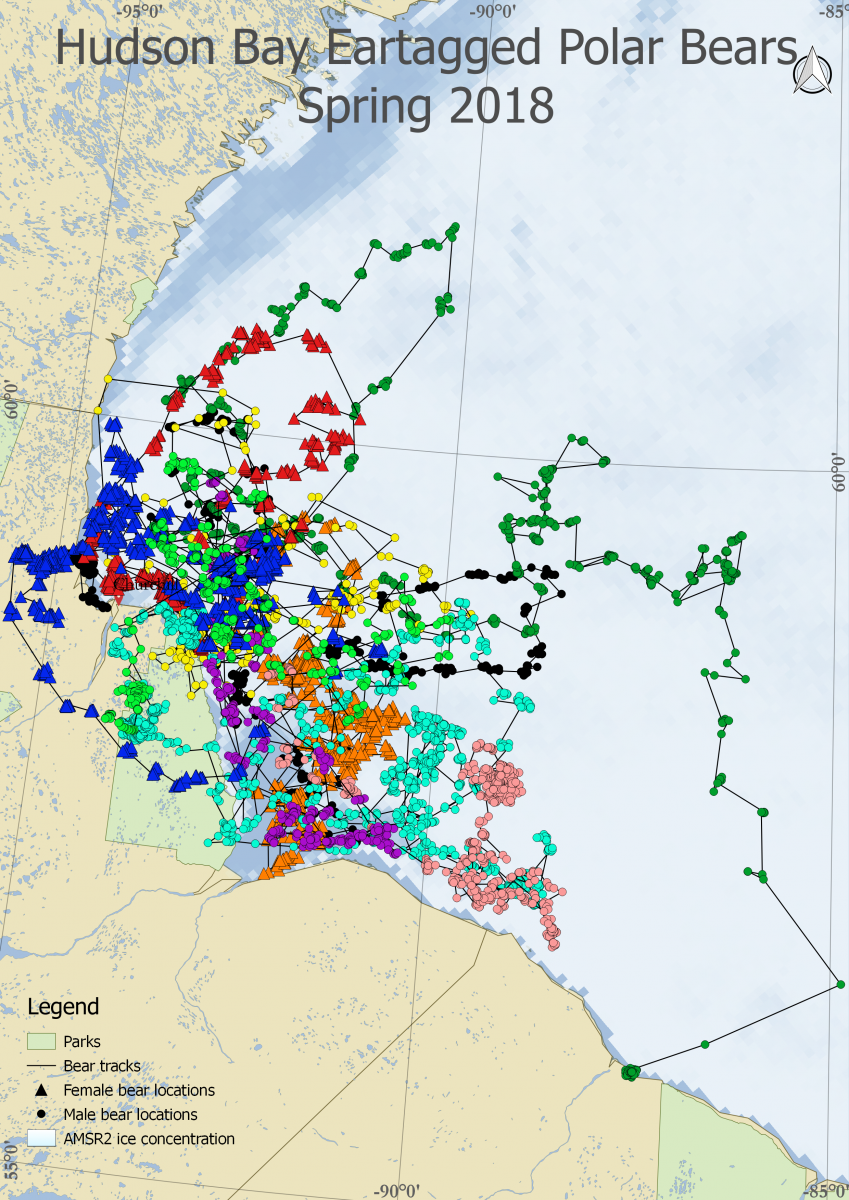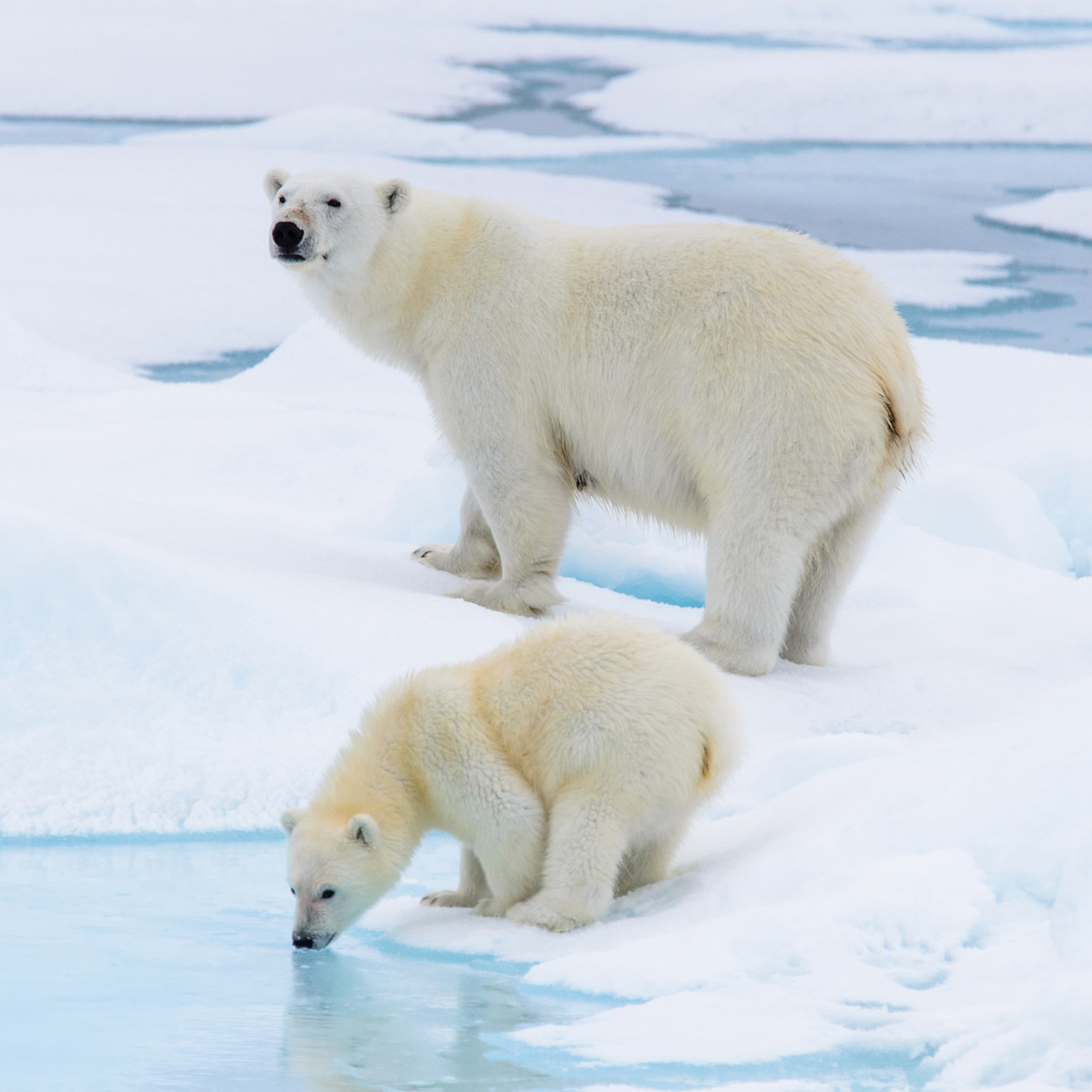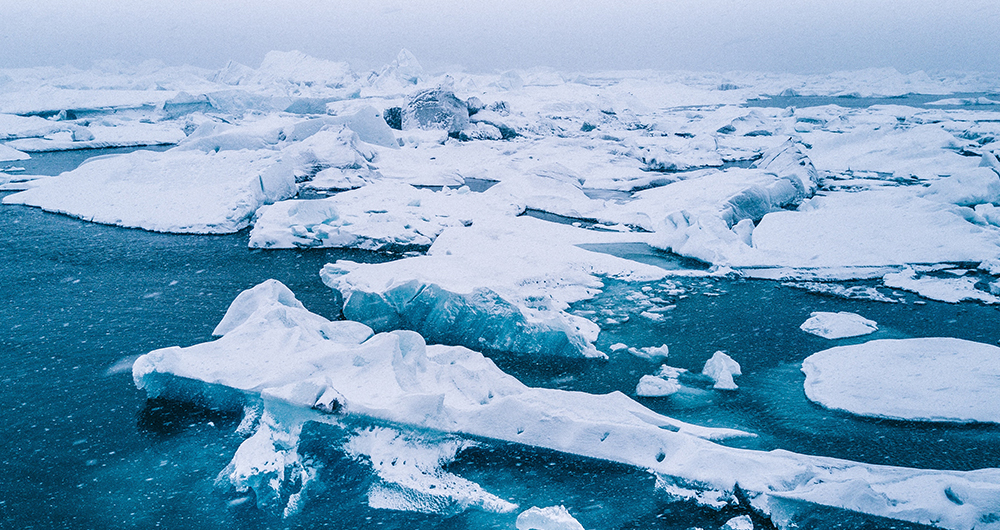Dr. Andrew E. Derocher, of the University of Alberta, is a grantee of TOF’s Polar Seas Initiative which is supported by individual donors and corporate partners such as que Bottle. We caught up with Dr. Derocher to hear more about the work he’s doing and what effects climate change is having on polar bears.
What’s it like studying polar bears?
Some species are easier to study than others and polar bears aren’t one of the easy ones. It depends on where they live, can we see them, and what methods we can employ. Polar bears live in remote frigid places that are incredibly expensive to be. Despite these challenges, long term research programs mean we know a lot about polar bears and yet we are always on the look out for new and improved tools.

What kind of tools do you use?
One interesting emerging tool is ear tag satellite linked radios. We’ve used satellite collars for decades to monitor habitat use, migration, survival, and reproductive rates, but these can only be used on adult females because adult males have necks wider than their heads and collars slip off. Ear tag radios (about the weight of an AA battery) on the other hand, can be used on both sexes and provide us with up to 6 months of location information. For some critical parameters, like the dates bears leave and return to land, these tags work well. They define the bear’s on-land period when the sea ice has melted and the bears move onshore and rely on their stored fat reserves for energy. There’s a limit to how long the bears can survive without food and by monitoring the ice-free period from a polar bear perspective we gain a critical understanding of how climate change is affecting them.

Bears tagged by Dr. Derocher and his team. Credit: Dr. Derocher
How does climate change effect polar bear behavior?
The biggest threat facing polar bears is the habitat loss caused by warming in the Arctic. If the ice-free period exceeds 180-200 days, many bears will exhaust their fat stores and starve. The very young and the oldest bears are most at risk.During an Arctic winter most polar bears, with the exception of denning pregnant females, are out on the sea ice hunting seals. The best hunting occurs in the spring when ringed seals and bearded seals are pupping. Lots of naïve seal pups, and mothers trying to nurse them, provide a window of opportunity for the bears to fatten up. For polar bears, fat is where it’s at. If you think of them as fat vacuums, you’re closer to understanding how they live in such a harsh environment. Seals rely on a thick blubber layer to stay warm and the bears rely on eating that energy-rich blubber to build up their own fat stores. A bear can eat up to 20% of its body weight in a single meal and of that, over 90% will go directly to their own fat cells to be stored for periods when seals aren’t available. No polar bear ever looked at its reflection and thought “I’m too fat”. It’s survival of the fattest in the Arctic.
If the ice-free period exceeds 180-200 days, many bears will exhaust their fat stores and starve. The very young and the oldest bears are most at risk.
Pregnant females tucked into overwinter dens have previously put down huge fat deposits allowing them to survive up to eight months without feeding while at the same time giving birth to and nursing their cubs. One or two tiny cubs about the size of a guinea pig are born around New Year’s day. If the ice melts too early, these new mothers won’t have enough time to store fat for the coming summer. Polar bear cubs rely on milk from their mothers for 2.5 years and because they’re growing so fast, they have little stored fat. Mom is their safety net.

No polar bear ever looked at its reflection and thought “I’m too fat”. It’s survival of the fattest in the Arctic.
What do you want people to know about your work?
It’s challenging to be a polar bear: frigid cold winter nights that last for months and living on sea ice that drifts with the wind and currents. The thing is, the bears have evolved to live there and conditions are changing. Becoming more terrestrial like their grizzly bear ancestor isn’t an option. Climate change is taking away the habitat they evolved to exploit. Our research contributes to understanding how polar bears are responding to warming conditions. As icons of the Arctic, polar bears have inadvertently become the poster species for climate change. We have time to change the future for the ice bear and the sooner we act the better. Their future depends on the decisions we make today.







